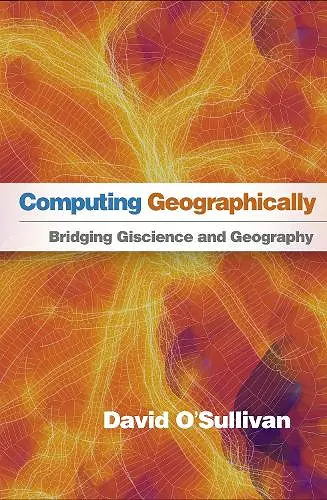Computing Geographically
Bridging Giscience and Geography
Format:Hardback
Publisher:Guilford Publications
Published:7th Mar '24
Should be back in stock very soon

Geographic information science (GISc) and systems (GIS) have grown rapidly in recent decades, increasingly on a separate track from geographic thought. As geography's "big ideas"--such as space, place, boundaries, scale, process, and relationality--have evolved, what does this mean for their computational representation? This book considers how key concepts have developed in geography and are represented (or not) in GISc, with a view to bridging gaps between the two. David O'Sullivan shows how revisiting the theoretical underpinnings of geography offers insights on enduring GIS challenges--including map projections, the modifiable areal unit problem, scale and map generalization, and the nature of space and place--while also enriching geographic thought. The book uses examples from across geography's subdisciplines to promote understanding. Chapters are self-contained essays that can easily form the basis of classroom discussions. The companion website provides the figures, code to produce versions of selected figures, updated web links, and other resources.
"A masterpiece--one of the greatest steps forward in computational geographic thinking since Waldo Tobler's and William Bunge's seminal work of the 1960s and 1970s. Beautifully illustrated and carefully constructed, this book offers both a panoramic view of past achievements and an accessible guide into future thinking."--Danny Dorling, PhD, Halford Mackinder Professor of Geography, University of Oxford, United Kingdom
"This book bridges a gap between geography and GISc that has vexed me and so many others for decades. O’Sullivan clearly illuminates the sometimes hidden ties between fundamental, 'raw' geography ideas and the discipline’s technical arm. He systematically shows both how GIS can be used to 'do' geographical work better and how geographic concepts have been--or could be--embedded in the computational techniques of GISc. O’Sullivan’s personable, witty, and direct writing style makes the book approachable and a joy to read. I felt almost like my questions were being answered in a face-to-face conversation. As both a GISer and a human geographer, I see this book as a useful text for upper-level undergraduate courses and graduate seminars. Indeed, geographers, giscientists, and our discipline as a whole are better off for having this book."--Rex J. Rowley, PhD, Department of Geography, Geology, and the Environment, Illinois State University
"Centering the concerns of geography in the work of GISc, this book is of great professional utility. The fact that the author is a GIScientist underlines the impact of the work. O'Sullivan's way of 'doing GIS' generously invites critical human geography into productive discussions with computational geography. His openness to allowing these fields to mingle and remain unsettled provides a welcome bridge."--Matthew W. Wilson, PhD, Chair and Professor of Geography, University of Kentucky
"Examples from different subdisciplines (geomorphology, biogeography, urban geography, critical social geography, and others) are included to promote understanding. Everyday examples that can be understood by an even broader audience are sprinkled in as well. The author delves into each topic by reviewing relevant literature from both geography and GISc. Quotations, personal reflections, and effective figures keep the reader engaged throughout."--John Kostelnick, PhD, Department of Geography, Geology, and the Environment, Illinois State University
"This book offers an exciting synthesis of major strands of thought in GISc and geography, centered on the analysis of space and place. It is comprehensive and authoritative, yet accessible and enjoyable to read. O'Sullivan weaves together abstract concepts and concrete examples in order to illuminate the gaps and the bridges between GISc and geography. A 'must read' for anyone working with spatial concepts."--Steven M. Manson, PhD, Department of Geography, Environment, and Society, University of Minnesota
-
ISBN: 9781462553938
Dimensions: unknown
Weight: 560g
312 pages